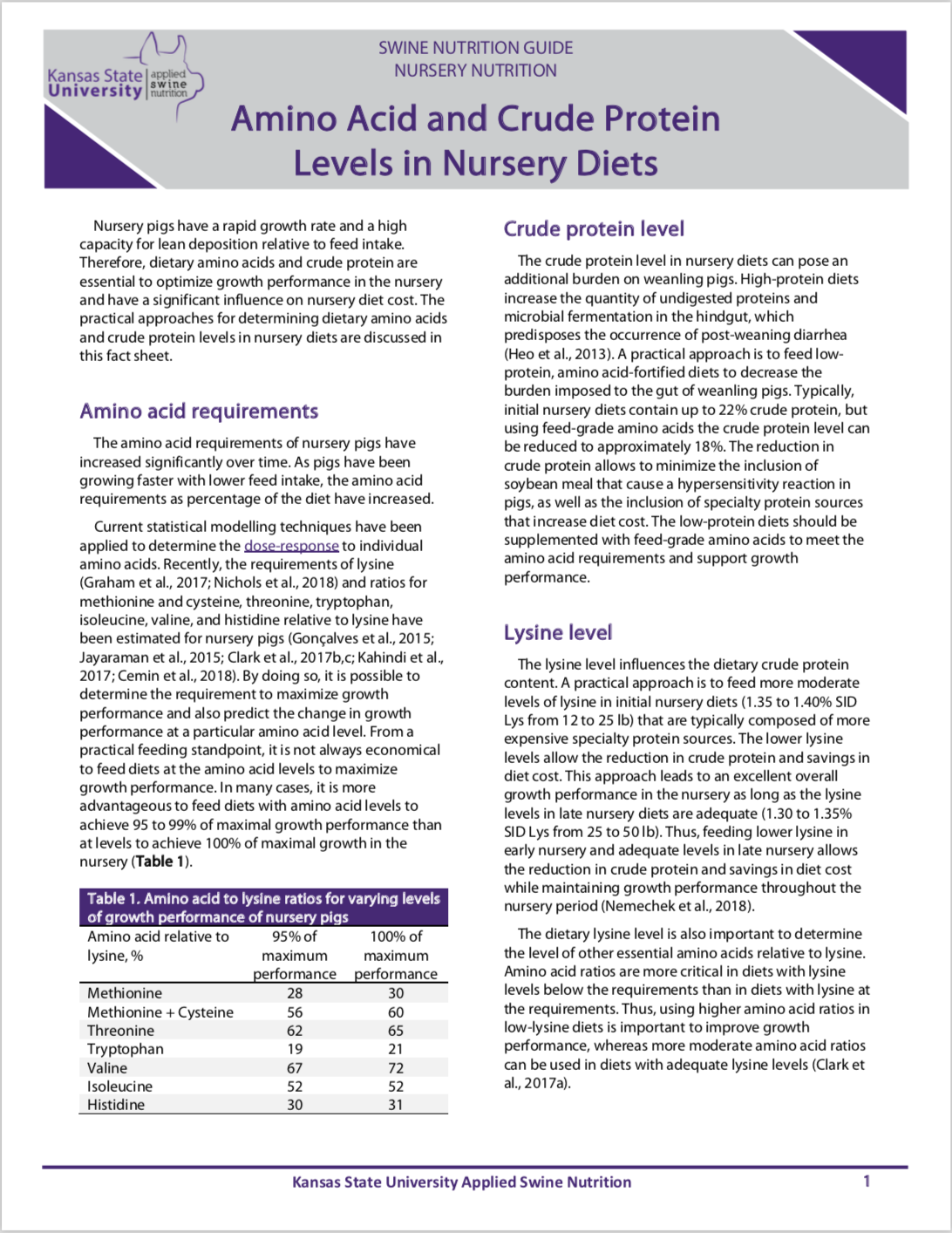Crude protein level in nursery diets
The crude protein level in nursery diets can pose an additional burden on weanling pigs. High-protein diets increase the quantity of undigested proteins and microbial fermentation in the hindgut, which predisposes the occurrence of post-weaning diarrhea (Heo et al., 2013). A practical approach is to feed low-protein, amino acid-fortified diets to decrease the burden imposed to the gut of weanling pigs. Typically, initial nursery diets contain up to 22% crude protein, but using feed-grade amino acids the crude protein level can be reduced to approximately 18%. The reduction in crude protein allows to minimize the inclusion of soybean meal that cause a hypersensitivity reaction in pigs, as well as the inclusion of specialty protein sources that increase diet cost. The low-protein diets should be supplemented with feed-grade amino acids to meet the amino acid requirements and support growth performance.
